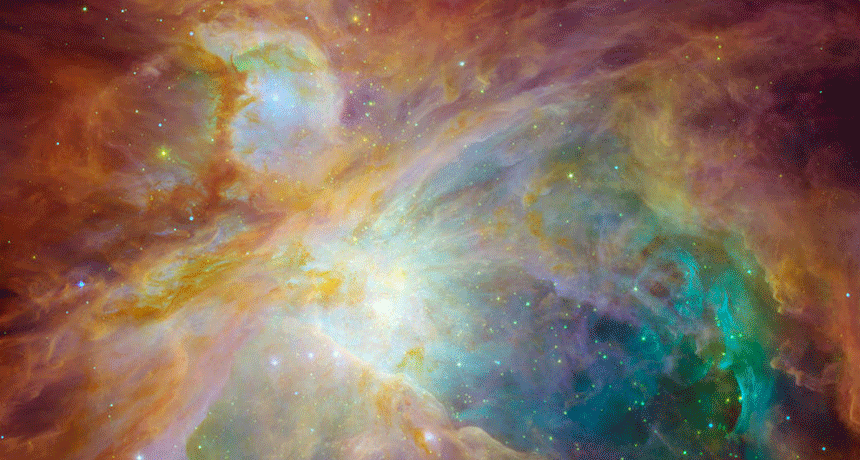cloud A plume of molecules or particles, such as water droplets, that move under the action of an outside force, such as wind, radiation or water currents. (in atmospheric science) A mass of airborne water droplets and ice crystals that travel as a plume, usually high in Earth’s atmosphere. Its movement is driven by winds. (in computing) A network of computers (hardware), known as servers, which are connected to the internet. They can be used to store data and computer programs (software) that can be accessed by one or many people at once, and from anywhere in the world.
element A building block of some larger structure. (in chemistry) Each of more than one hundred substances for which the smallest unit of each is a single atom. Examples include hydrogen, oxygen, carbon, lithium and uranium.(in chemistry) Each of more than one hundred substances for which the smallest unit of each is a single atom. Examples include hydrogen, oxygen, carbon, lithium and uranium.
gravity The force that attracts anything with mass, or bulk, toward any other thing with mass. The more mass that something has, the greater its gravity.
helium An inert gas that is the lightest member of the noble gas series. Helium can become a solid at -272 degrees Celsius (-458 degrees Fahrenheit).
hydrogen The lightest element in the universe. As a gas, it is colorless, odorless and highly flammable. It’s an integral part of many fuels, fats and chemicals that make up living tissues. It’s made of a single proton (which serves as its nucleus) orbited by a single electron.
matter Something that occupies space and has mass. Anything on Earth with matter will have a property described as "weight."
nebula A cloud of space gas and dust existing between major adult stars. Telescopes can detect these clouds by the light they emit or reflect. Some nebulas also appear to serve as the nurseries in which stars are born.
star The basic building block from which galaxies are made. Stars develop when gravity compacts clouds of gas. When they become dense enough to sustain nuclear-fusion reactions, stars will emit light and sometimes other forms of electromagnetic radiation. The sun is our closest star.
supernova (plural: supernovae or supernovas) A massive star that suddenly increases greatly in brightness because of a catastrophic explosion that ejects most of its mass.
ribose A type of sugar that forms the backbone for RNA.

